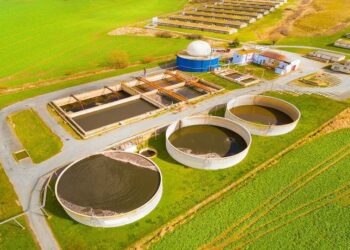An important component of many facilities and large-scale systems in the chemical industry or offshore industry, as well as in power plant construction is the integrated pipe system to transport the most varied media.
It is not unusual that pipelines have a considerable share in the overall systems – and thereby also in the costs.
An efficient and economical pipe production is therefore a decisive factor. Bent pipe systems offer some advantages in comparison to welded lines, which are traditionally produced from welded individual components such as welded bends and straight tube or pipe sections. Costs and production times are noticeably reduced. With regard to bending angle and geometries, plant engineers can enjoy distinctly more flexibility thanks to the bending.
One of the usual methods for the production of three-dimensional tube or pipe systems is welding these with individual tube or pipe bends, so-called welded bends. The use of welded bends requires numerous working steps. As a result of modern technologies, the demand for application specific, individual and complex pipe geometries is increasing. Complex geometries especially require numerous welding procedures which are both time and personnel intensive.
The same applies to the subsequent welding seam inspection. Precision-fit pipe systems can be produced clearly faster and more precise on CNC-controlled bending machines. These allow time savings of up to 95 percent as well as noticeable cost reductions.
The pipe and tube bending machine expert Schwarze-Robitec has exactly the right machines in its program for these tasks. “With our machines developed especially for these tasks, welded tube or pipe constructions can be replaced by fully bent tube or pipe systems,“ explains Bert Zorn, Managing Director of Schwarze-Robitec.
“The wall thinning lies within the range of the permissible tolerances of the original tubes or pipes.†At the same time, the CNC-controlled tube or pipe cold bending machines are designed for permanent operation under high load and produce three-dimensional geometries in a single work step.
For this purpose, the pipe is clamped in the bending machine and brought into the corresponding position for the first bend. After the first bend, the bending machine transports and turns the pipe automatically into the positions for the following bend. These steps repeat as often as is necessary until the desired tube or pipe geometry is achieved. The simple to operate CNC control from Schwarze- Robitec conducts all necessary processes and movements of the machine fully automatically.
A complex step-by-step programming, as is usual with machines customary in the market, is not necessary with the Schwarze-Robitec machines.
This is how three-dimensional pipe systems are produced very quickly without a single welding seam. The subsequent quality control is also very simple: A maximum of two welding seams – at that beginning and end of the pipe – have to be checked before installation. In contrast, when using the method of pipe welding, numerous checks are required which demand time and personnel and thus represent additional cost factors. The number of welding seams reduced to the absolute minimum also offers extra security against leakage. This is a decisive advantage in particular with pipe systems which need to withstand high pressures reliably.
As plants, power plants and ships are being built increasingly more compact, the pipe routings are also changing: They are becoming more complex to utilize the available space as best as possible.
Correspondingly high are the demands placed on pipe production. Here, the bending process also offers decisive advantages. The bending angles are freely selectable and therewith allow the greatest possible flexibility. The situation is different when using prefabricated welding bends. They require, inherent in the system, working with specified bending angles or need elaborate manual reworking to achieve the desired angle.
With this process, the standardized welding bends are reworked to another bending angle by hand with the help of an angle grinder or saw – a time and cost intensive method. If the required bends are not in stock, the whole production will come to a standstill in the worst case. In contrast to this, the bending machines produce the most complex pipe systems with flexibly arranged geometries. “It’s a matter of course, that we support our customers with the conversion to the bending technology and realize the determination of the optimal processing sequence,†adds Bert Zorn. “Our bending experts can call on decades of experience and are specialized in demanding bending solutions.†The bending tools from Schwarze-Robitec make another decisive contribution to the economical production of difficult shapes:
As a result of the high-quality workmanship of the tools, they have high wear resistance and dimensional stability. Factors which are crucial for precision and repeat accuracy. Optional additional equipment such as, for example the integration of an automatic charging line, marking or flange tube equipment offer further savings potentials and cost benefits.
Pipe or tube processing takes on an important role in many industrial sectors. While the requirements on production with regard to quality, precision and complexity are increasing, production times and costs have to drop further. Against this background, the switch from welded to bent pipe or tube systems offers distinct benefits, which achieve significant time and cost savings.


















































